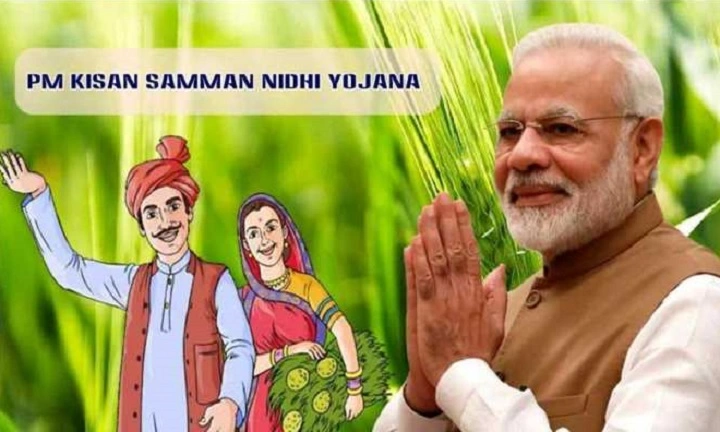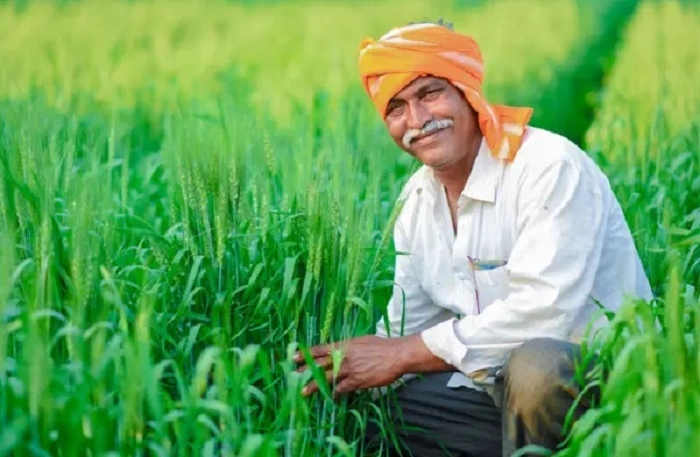The Pradhan Mantri Kisan Samman Nidhi (PM-Kisan) scheme is a landmark initiative launched by the Government of India, aimed at providing financial support to small and marginal farmers across the country. Introduced with the primary objective of ensuring income security to farmers and promoting agricultural growth, the scheme has had a substantial impact on rural livelihoods. As India continues to be predominantly agrarian, the role of schemes like PM-Kisan is crucial in sustaining the economy and improving farmers’ living conditions.
This article delves deep into the Pradhan Mantri Kisan Samman Nidhi scheme, exploring its objectives, eligibility criteria, impact, and the latest updates in the news, providing a comprehensive overview of how this initiative is shaping India’s agricultural landscape.
The Genesis of PM-Kisan: A Scheme for Farmer Welfare
The PM-Kisan scheme was officially launched on February 24, 2019, by Prime Minister Narendra Modi. Recognizing the struggles of small and marginal farmers, the government took this bold step to directly transfer monetary aid to them, ensuring financial support throughout the year.
Before the scheme, Indian farmers, especially those with small landholdings, faced multiple challenges including fluctuating crop prices, inadequate access to resources, and the burdens of loans. PM-Kisan was designed to alleviate these issues by offering direct income support, thereby improving the farmers’ purchasing power and agricultural productivity.
Key Objectives of PM-Kisan
Income Support: The core objective of the scheme is to provide financial assistance to farmers, particularly small and marginal landholders. By offering a fixed amount in installments, the government ensures that farmers have some buffer against unforeseen economic hardships.
Boosting Agricultural Productivity: With increased financial security, farmers can invest in better seeds, fertilizers, and irrigation facilities, directly contributing to the overall growth in agricultural productivity.
Promoting Rural Development: The scheme aims to uplift rural areas by ensuring that farmers, who form a significant part of rural populations, receive the necessary financial aid. This improves their standard of living, thus promoting overall rural development.
Reducing Farmer Distress: One of the underlying goals of the PM-Kisan scheme is to reduce the distress caused by indebtedness and financial uncertainties, which often lead to farmer suicides in India.
Understanding PM-Kisan: Eligibility, Benefits, and Registration Process
Eligibility Criteria
The PM-Kisan scheme primarily targets small and marginal farmers. As per the scheme’s guidelines:
-
Landholding Criteria: Farmers who own cultivable land of up to 2 hectares (5 acres) are eligible to receive benefits under the scheme. The land must be in the farmer’s name, and the ownership must be verifiable through government records.
-
Family Definition: The scheme defines a family as a husband, wife, and minor children. The financial benefit is extended to each farmer family that qualifies the criteria.
However, not all farmers are eligible. The following categories are excluded:
- Institutional landholders
- Retired government employees with pensions exceeding ₹10,000 per month
- Individuals who paid income tax in the previous assessment year
- Professionals such as doctors, engineers, and lawyers registered with professional bodies
- Serving or former Ministers, Members of Parliament, Members of Legislative Assemblies, and members of cooperative societies.
Financial Benefits
Under the PM-Kisan scheme, eligible farmers receive ₹6,000 per year, which is disbursed in three equal installments of ₹2,000 each, directly into their bank accounts. This direct benefit transfer (DBT) ensures transparency and minimizes leakages in the system.
The financial aid can be used by farmers to meet their agricultural input needs such as seeds, fertilizers, and machinery, or to cover household expenses during the lean season when farm income tends to drop.
Registration Process
Farmers can register for the PM-Kisan scheme through multiple channels:
Online Registration: The PM-Kisan portal (https://pmkisan.gov.in/) provides a user-friendly interface for farmers to register themselves. They need to enter their Aadhaar number, bank account details, and landholding information to complete the process.
CSC (Common Service Centers): Farmers who do not have access to the internet can visit nearby CSCs, where facilitators help them complete the registration process.
State Government Offices: Farmers can also approach local agricultural offices or nodal officers designated by the state government to submit their applications.
Once the application is processed and verified, the eligible farmers start receiving benefits directly into their bank accounts.
Impact of PM-Kisan on India’s Agricultural Sector
Empowering Small and Marginal Farmers
The PM-Kisan scheme has been a game-changer for small and marginal farmers, who constitute the majority of India’s farming community. By providing them with direct financial assistance, the scheme has significantly alleviated the financial stress that often hinders agricultural activities. For many farmers, the funds serve as a lifeline during the sowing season, allowing them to purchase necessary inputs without resorting to high-interest loans.
Increased Agricultural Investments
With the direct transfer of funds, farmers now have greater autonomy over how they allocate their resources. This has led to a noticeable increase in investments in farm inputs like better quality seeds, fertilizers, and irrigation systems. Farmers are now able to make timely purchases, which has contributed to improved crop yields and overall agricultural productivity.
Encouraging Modern Farming Techniques
The steady income from PM-Kisan has also encouraged farmers to adopt modern farming techniques. Many have begun investing in small-scale mechanization, like buying tillers or harvesters, which reduces manual labor and improves efficiency. This shift towards modernization is essential for transforming India’s agricultural sector into a more sustainable and productive industry.
Reducing Farmer Suicides
India has long faced the tragic issue of farmer suicides, often caused by overwhelming debt and crop failures. While the PM-Kisan scheme is not a panacea for all the problems faced by farmers, it has provided a crucial safety net. The financial aid, although modest, has helped many farmers avoid falling into a debt trap by giving them a reliable source of income.
Promoting Rural Economic Growth
The infusion of funds into rural areas through PM-Kisan has had a multiplier effect on the local economy. As farmers spend their installment amounts on agricultural inputs and other necessities, the rural economy benefits from increased demand for goods and services. This has stimulated growth in local businesses and created employment opportunities.
Challenges and Criticisms of PM-Kisan
While the PM-Kisan scheme has been widely appreciated, it is not without its challenges and criticisms.
Exclusion of Tenant Farmers and Landless Laborers
One of the most significant criticisms of the scheme is that it excludes tenant farmers and landless agricultural laborers. Since the scheme is tied to land ownership, a large section of the farming community, particularly tenant farmers, who rent land for cultivation, are left out. This has led to demands for a more inclusive approach that extends benefits to tenant farmers and landless laborers, who are often the most vulnerable.
Delays in Payment Disbursement
There have been instances where farmers faced delays in receiving their payments due to bureaucratic hurdles and technical glitches in the system. In some cases, discrepancies in land records or Aadhaar card details have caused delays, leaving farmers in uncertainty.
Inadequate Amount for Larger Expenses
While ₹6,000 per year offers some relief, critics argue that the amount is too small to make a significant difference in a farmer’s life, especially given the rising costs of agricultural inputs. For larger expenses like machinery or advanced irrigation systems, the amount is often insufficient, and farmers may still need to rely on loans or government subsidies for major investments.
Latest News and Updates on PM-Kisan
2024 Updates: Changes in Scheme and Future Plans
As of 2024, the government has introduced several new measures to improve the efficiency and reach of the PM-Kisan scheme.
-
Enhanced Digital Infrastructure: To tackle the issues of payment delays, the government has strengthened the digital infrastructure of the scheme. A new, more streamlined verification process has been implemented to reduce errors in land records and Aadhaar information.
-
Mobile App Launch: The Ministry of Agriculture and Farmers Welfare launched a mobile app for PM-Kisan in 2023, making it easier for farmers to check the status of their payments, update their details, and access other related services.
-
Inclusion of Tenant Farmers: In light of ongoing demands from farmer unions, there has been increasing pressure on the government to include tenant farmers under the PM-Kisan scheme. While this change has not been officially made, discussions are underway to find a solution that provides financial aid to tenant farmers without compromising the integrity of the existing system.
-
Focus on Women Farmers: Recognizing the role of women in agriculture, the government has started promoting the registration of women farmers under the PM-Kisan scheme. Special camps and awareness drives are being held in rural areas to ensure that women farmers also benefit from the initiative.
Impact of PM-Kisan on the 2024 Elections
As a flagship scheme of the Modi government, PM-Kisan is expected to play a significant role in the 2024 general elections. The scheme has garnered widespread popularity in rural areas, which constitute a critical voter base. Political analysts believe that PM-Kisan, along with other welfare programs like the PM Awas Yojana and the Jan Dhan Yojana, will be central to the BJP’s campaign strategy, especially in agrarian states like Uttar Pradesh, Punjab, and Maharashtra.
However, opposition parties have criticized the scheme for not addressing the root causes of agrarian distress, such as low Minimum Support Prices (MSP) and inadequate irrigation facilities. They argue that while PM-Kisan offers temporary relief, it does not provide long-term solutions for improving the




